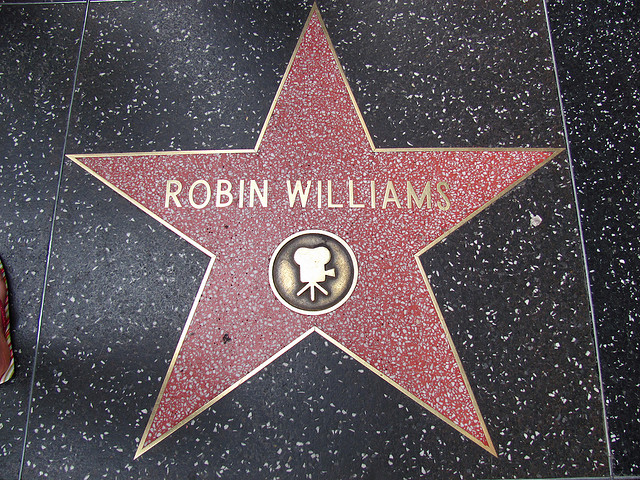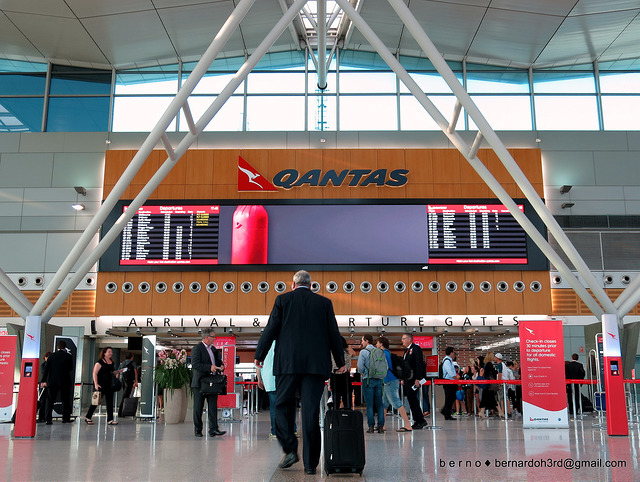Search Results: being seen
Seeing And Hearing Vs. Being Seen And Heard
filed in Marketing, Storytelling, Strategy

As children, we know that understanding what motivates our audience is the shortcut to getting attention. We seem to unlearn this ability to be empathetic communicators when being seen and heard becomes our main driver.
We have a better chance of being heard when we understand what the people we’re speaking to are open to hearing. We do that by asking ourselves better questions.
Four Important Messaging Questions
1. Who is this information for?
2. What do we want them to know?
3. Why do they need to know this?
4. What do we want them to do next?
Communication isn’t only about finding the right words.
It’s about finding the right reason to say them.
Image by Garry Knight
Being Seen And Heard
 The numbers vary, but the trend is unmistakable. The average consumer is subjected to more marketing messages every day. In a world where it’s harder to get noticed marketers have responded by trying to be more visible. Being noticed is the goal of most marketing.
The numbers vary, but the trend is unmistakable. The average consumer is subjected to more marketing messages every day. In a world where it’s harder to get noticed marketers have responded by trying to be more visible. Being noticed is the goal of most marketing.
The irony is five seconds in the spotlight doesn’t make or break a career or a company. It’s the five years of work that preceded those five seconds that make all the difference.
Our goal isn’t simply to been seen and heard—it is to do work that’s worthy of being seen and heard.
Image by Blahu
The Right Thing
filed in Meaningful Work, Worldview
 Long before digital platforms, social media and online reviews we’ve had the incentive to do the right thing.
Long before digital platforms, social media and online reviews we’ve had the incentive to do the right thing.
The need for the protection of our tribe and a sense of belonging to our community meant we adhered to rules and norms for the benefit of the collective good. We needed to do right by others, not just ourselves if we wanted to belong. In the past, it was difficult to say one thing and do another.
In a digital world, this is not the case. We can pay lip service in public on occasion without doing the hard, often unseen work of caring every day.
There’s a difference between being seen to do the right thing and doing the right thing. Everyday actions speak louder than occasional words.
Image by Dan Meyers
Immeasurable Success
filed in Success

The rows of business magazines in the airport scream the word ‘success’ from their covers.
Smiling founders who’ve ‘made it’ are profiled inside.
Their success reflected in the visible and the measurable.
When did being successful become about being seen to have achieved success?
We, the keepers of our culture, keep score.
We like to measure our progress. Come out on top. Be first. We like to win.
In our attempt to find a way to do that, we have learned to value and measure things in ways that are often disproportionate to their benefit to us collectively. How we keep score changes the stories we tell, the businesses we build and the societies we shape.
The stories we tell about success change us.
We become what we measure.
We are who we take with us on the journey and who we leave behind.
Image by Austin Distel
Is Your Marketing Working?
filed in Marketing, Storytelling, Strategy

Last week I visited the local camping store to buy a gift card. As I was paying at the point of sale, a one question survey popped up on the keypad. The store manager asked if I’d seen their TV ad. When I said I hadn’t, she hit ‘no’ on the survey. I couldn’t resist asking her what percentage of people said ‘yes’. In her store, the answer was zero. In the time they’d been doing this survey the store manager hadn’t encountered a single paying customer who had seen the company’s TV ad. Not one.
Their marketing (or I should say, their advertising) isn’t working. And yet, the store was full of people buying tents for their camping trips down south, and warm jackets for their overseas skiing trips. The TV adverts are seen by hundreds of thousands of people. The problem is that those ads aren’t being seen by the right people. The camping company has discovered that more reach doesn’t equate to more resonance or more of the right customers.
Making more people aware that your product or service exists doesn’t mean your product or service will be more successful. It’s not enough to tell your story. You need to tell the right story to the right people at the right time.
The tools in my new book, The Right Story, now available for pre-order will show you how.
Image by Thomas Rousing
What Does Success Look Like?
filed in Strategy

Back in the ’90s, when I was pregnant for the second time, our local health authority announced new measures to cut waiting times at hospital outpatient clinics. This was great news for me and other pregnant women who were often juggling appointments with work or childcare arrangements.
Late on in my pregnancy, I arrived for an appointment and handed in my appointment card. The receptionist noted my attendance and invited me to take a seat in the waiting room, among the dozens of other women flicking through worn out magazines or wrestling tired toddlers. I had barely sat down when a nurse called my name. Unbelievably, the clinic wasn’t just running to time—it was running ahead of time! On every other occasion that I’d attended waiting times had been over an hour, often two. The long wait was accepted as a fact of life. Doctors just run late. And yet, that day I was being seen immediately.
The nurse took me into a side room, weighed me, took my blood pressure, tested my urine and documented the time I’d ‘been seen’ in her paperwork. Then she brought me back into the waiting room where I sat for another two hours before the obstetrician finally called me in.
On paper, it looked like the clinic was doing a great job of keeping to scheduled appointment times. On paper, it looked like patients were in and out of the clinic in no time. On paper the health authority was hitting its targets. But in reality nothing much had changed for the patient.
It’s easy to design the system that looks efficient on paper.
It’s easy to show up to a meeting without being present while you’re there.
It’s easy to reply to an email with a generic reply without ever responding to the problem.
It’s easier to treat the symptoms than it is to get to the heart of the problem.
Getting to the heart of the problem and caring enough to fix is way harder. But ticking boxes or papering over the cracks doesn’t meet our customer’s desire to feel seen and heard. And it doesn’t fulfil our need to do meaningful work either. That’s why the energy we devote to getting better at the hard part is worth it.
How we define and measure success changes how we shape the world.
Every one of us has the power to do that.
Image by Orbis
7 Steps To Becoming A More Strategic Marketer
 As marketers we spend much of our time and energy on tactics. We agonise over the creation of lead magnets, spend countless hours honing sales pages and perfecting social media promotions.
As marketers we spend much of our time and energy on tactics. We agonise over the creation of lead magnets, spend countless hours honing sales pages and perfecting social media promotions.
How To Become A More Strategic Marketer
1. Take a long-term view of your business, one that doesn’t require you to go for quick wins.
2. Find a group of people you care about serving.
3. Listen to what they say and watch what they do.
4. Create a product or service you believe in, one that solves problems and satisfies wants and needs.
5. Trust the people you made it for.
6. Stop selling to and start connecting with people, talk about why you made what you made.
7. Rinse and repeat.
There’s nothing more magnetic to your potential customers than the feeling of being seen and understood. That’s the number one job of your marketing.
Image by Don Harder.
What Will Your Verse Be?
filed in Entrepreneurship
 One of my heroes died yesterday. Maybe he was one of yours too? Robin Williams wasn’t the kind of hero you are reminded of every day. You might remember him as you’re riding the train home one night and you smile when you see the words ‘Carpe Diem’ etched into a teenager’s forearm. Or when you hear a piece of music from a movie soundtrack on the radio. Or when the TV channels inevitably play Mrs Doubtfire trailers at Christmas.
One of my heroes died yesterday. Maybe he was one of yours too? Robin Williams wasn’t the kind of hero you are reminded of every day. You might remember him as you’re riding the train home one night and you smile when you see the words ‘Carpe Diem’ etched into a teenager’s forearm. Or when you hear a piece of music from a movie soundtrack on the radio. Or when the TV channels inevitably play Mrs Doubtfire trailers at Christmas.
Journalist Ty Burr tells the story about the time he met Williams one morning on a New York street, as they were both setting out for a jog. For a split second Ty saw the man before his brain processed who he was. The man (not the actor) smiled back until he saw the flicker of recognition cross Ty’s face, then he put on his celebrity armour.
The irony of the human condition is that we fear being invisible and yet we fear being seen. We want to feel like what we do matters, that our time here stood for something. And yet we know that when we stick our necks out we are opening ourselves up to criticism and failure.
Despite his genius Robin Williams was no exception, he experienced the fear of not being good enough as we all do. He once acknowledged “this idea that you’d better keep working otherwise people will forget.” It was that need to keep raising the bar that made him one of those rare actors who could make us laugh and cry in equal measure.
He cared about doing that. He knew it mattered. He understood that he was here to contribute a verse and that doing it meant facing his fear of failure. I’m glad he did.
What will your verse be?
Image by Loren Javier.
 Everyone was surprised to hear the longer than usual customer service announcement as we were preparing to land in Los Angeles. Many people on board were catching connecting flights to different cities in Australia, and there’s always a little anxiety amongst passengers who are trying to make those connections. The typical announcement informs passengers to check the departures board or see the ground crew on arrival at the gate. This one was different.
Everyone was surprised to hear the longer than usual customer service announcement as we were preparing to land in Los Angeles. Many people on board were catching connecting flights to different cities in Australia, and there’s always a little anxiety amongst passengers who are trying to make those connections. The typical announcement informs passengers to check the departures board or see the ground crew on arrival at the gate. This one was different. The purpose of your brand story and of every piece of marketing material is to move a prospective customer from awareness to loyalty.
The purpose of your brand story and of every piece of marketing material is to move a prospective customer from awareness to loyalty.